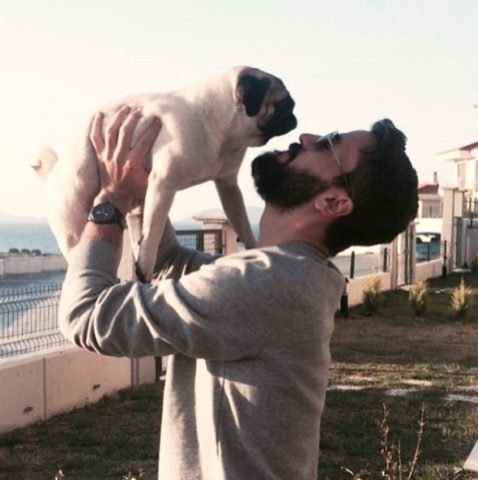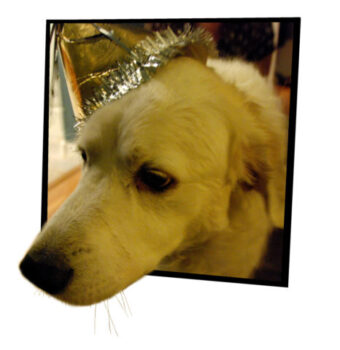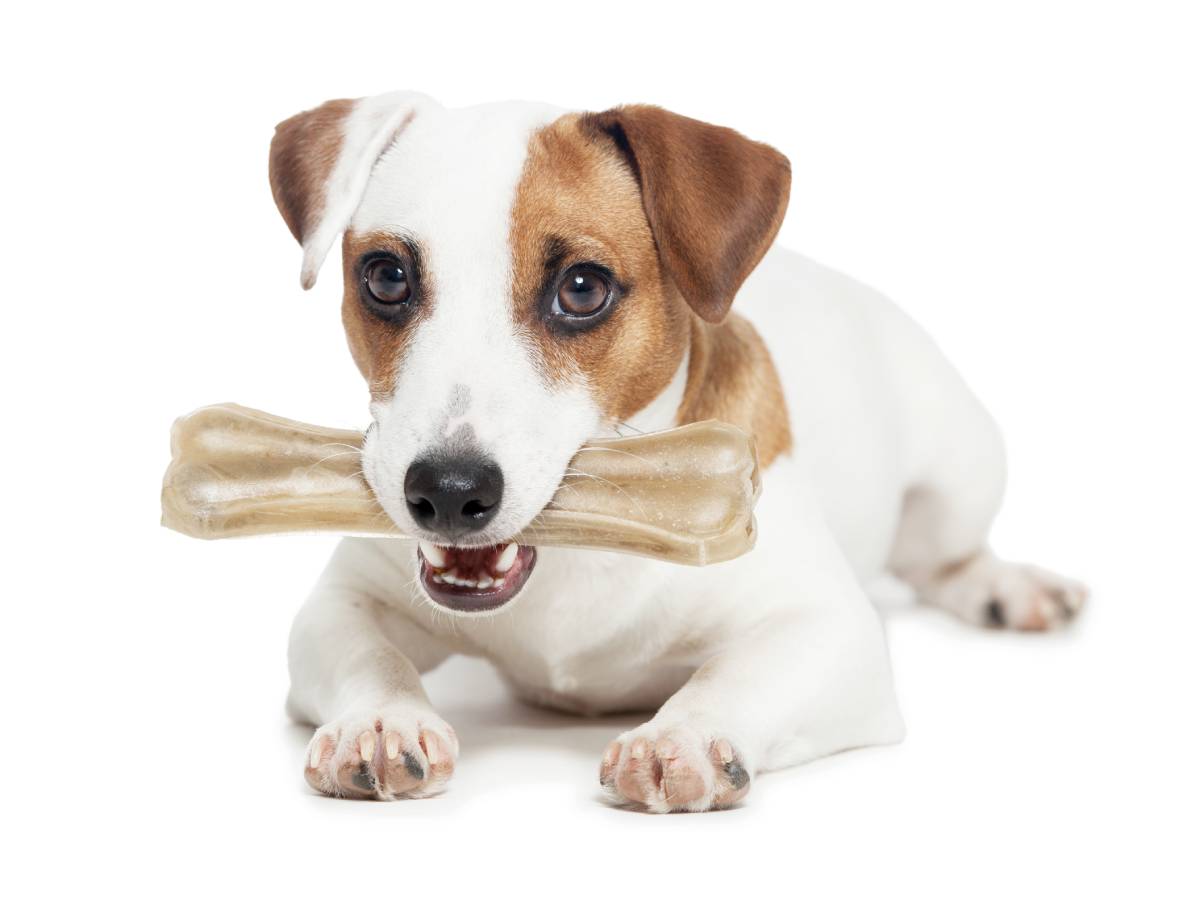Crate training a dog is something you should start as soon as you bring the dog into your home.
After my Labrador (Leo), my French Bulldog (Jack) was the second dog that I brought home.
It was quite difficult to make Jack focus on commands, and he used to shy away from me in the beginning. Treats and toys were of no help! I felt hopeless that I was ever going to convince this dog to get along with me.
The usual simple steps to crate training are practical and helpful — but they skip on many day-to-day troubles a dog owner might face in the process of crate training a dog.
It was Jack who made me learn an important rule of communication: ‘understand before being understood’. This definitely applies to crate training as well!
When I searched about the history of Jack, I found that he had bad experiences with the previous owner. It took him time to trust me. Now, Jack is not only my best friend — but Leo’s as well.
Here are some important lessons I’ve learned about crate training a dog:
#1 – Dogs like to have their own personal space.
There’s confusion about whether dogs are den animals or not.
The fact is that dogs aren’t den dwellers throughout their life, but they have instincts to live in dens from birth. Dogs view their den as a comfortable and safe place — especially pregnant dogs, puppies, and dogs with certain fears.
I utilized this philosophy and created a comfortable place within the crate for my dog. I left the crate door open for him to explore the little kennel-like space and get familiar with his safe shed. Whenever he entered the crate on his own, I would place a treat nearby for him to nibble on.
I realized later that he did not like yogurt in the yogurt peanut butter banana treat I was giving him. Maybe that’s why he wasn’t attracted to the treats initially. Lesson learned: Know your dog’s preferences. For example, my other dog Leo still prefers it over other treats.
So, it’s important that you figure out your dog’s favorite treat and stay patient while crate training and housetraining.
#2 – Crate size is important.
At first, I didn’t pay any attention to crate size.
I let Jack sleep in a large crate that was comfortable for Leo (my large Labrador) — but it was too much space for a small French Bulldog.
You can probably guess what happened next… Since Jack wasn’t housetrained yet, he began defecating in a corner space inside the large crate.
I highly recommend that you buy a crate that is appropriate for your dog’s size.
#3 – Metal wire crates are best.
Being a clean freak, my wife was very particular that our dog crates should be easy to spot-clean and wash.
Metal wire crates are better than plastic crates — because bad smells do not get absorbed in metallic rods, like they do in plastic.
However, metal dog crates aren’t always the easiest to travel with. So for travel purposes, if you choose another type of dog carrier, just make that it’s made of a washable material.
#4 – Where you put the dog crate matters.
Most dog owners don’t give enough thought to where to place the dog crate in the house.
This is another mistake I made when I was crate training a dog for the first time. I was having a get-together at home, and thought it would be great for my dog to socialize in the crowd — so I placed the dog crate in our guest hall. Unfortunately, my dog became more scared and silent after that day. So that was a step backwards for us in the crate training process.
I learned that it’s wise to keep your dog’s crate near you during the day and at night… but not necessarily in the middle of a lot of commotion.
When crate training a dog, the idea is to put the crate where you can see what your dog is doing at all times — and for him to be able to see you.
If you’re a deep sleeper, placing the crate in your bedroom will make it easier to notice when your dog becomes anxious, restless, or needs to go outside.
Also, be sure to keep things like electrical cords, plants, and other things beyond the reach of your dog’s crate.
#5 – Remove the dog’s collar when inside the crate.
Happy experiences should be related to the crate. That was the first advice my neighbor gave me when I started crate training Leo.
Leaving your dog’s collar on when he’s inside the crate could lead to an unhappy experience — because dog collars and dog tags can sometimes “catch” on things, causing the dog to feel choked or caught.
I have witnessed people keeping the dog collar or harness on even when the dog is in the crate.
However, you should always remove dog collars, harnesses, and leashes — so your dog can comfortably place his neck on a soft bed. And you don’t want to risk the potential for those items to “get caught” on the wire crate, the bedding, or other items inside the crate.
Make no mistake… your dog could choke to death if he feels too restricted and tries to escape the situation in a panic.
#6 – Find the type of reward your dog responds to best.
Rewards and patience are the key to successful positive reinforcement with dogs.
Find out what attracts your dog the most (his all-time favorite treat or toy) and only provide that treat or toy when your dog behaves positively inside his crate. Use other treats or toys as rewards at other times.
Like I said earlier, if you understand your dog, it will be easier to get him to follow your lead and do what you ask him to do. Just like when I gave Jack the wrong dog treats in the beginning… he didn’t like them, so they were not working. Jack took some time to trust me and follow my commands. And I took some time to figure out what my dog liked and responded to the best.
TIP: I often use Jack’s regular kibble as a dog treat — that helps to keep his weight balanced.
#7 – Gradually increase the amount of time your dog stays in the crate.
It’s easy to overlook how long we leave our dogs in their crates — because we’re seeking quick results that fit into our schedule.
I remember that I started losing hope when the response rate of my dog was not good enough.
Here’s the dog crate training schedule I used:
- I always let the Jack enter his crate by himself.
- I started off with just 10 to 20 seconds in the crate at a time — and I would leave the room.
- Eventually, I left him for 15 to 30 minutes in the crate at a time during the first 3 to 4 weeks.
- After that, I increased Jack’s time in the crate to 1 to 2 hours and maintained that routine for 3 to 4 weeks.
Keep in mind, the time a dog can remain inside a crate varies from dog to dog and breed to breed. My dog Leo learned to adapt quite quickly. Jack took a little longer.
Crates are best used as a relatively short-term management tool, not as a lifetime pattern of housing. Your goal should be to work on any behavior problems and train your dog so that it’s not necessary to crate her 8 to 10 hours every weekday throughout her life. —Pets WebMD
TIP: To manage crate training with your work schedule, you might want to leave your dog in an indoor dog playpen in the beginning. That way, later you will have both options available to you — the crate and the playpen — and your dog will be comfortable staying in either one.
#8 – Leave challenging dog toys inside the crate.
As the amount of time your dog spends inside the crate increases, you will need to update your methods of giving treats to your dog inside the crate.
Most dog owners do not realize this and stick to giving a quick treats as soon as the dog goes inside the crate.
But then what happens? Sometimes a destructive behavior or separation anxiety develops.
To avoid that, I bought some engaging dog toys and treat-dispensing dog puzzles. I put them inside the playpen when I left for work, and they kept my dog busy all day long while I was gone.
#9 – Watch for behavior changes in your dog.
Whenever you are house training or crate training your new four-legged family member, bear in mind that he may develop a few unwanted behavioral issues.
However, if you are vigilant in your observations and you act the first time you see it, then you can change the behavior before it becomes a permanent habit for your dog.
Crate training a dog can lead to separation anxiety, destructive behaviors, or fearful behavior if not done properly. The first time you notice it, you need to interact and change the situation in some way to prevent it from happening again… and again.
A good rule of thumb is that a dog can be crated overnight and for up to half the day — provided his social and physical needs are being met while not in the crate … A good estimate of how long a pup can wait before needing to relieve himself is as many hours as he is months old, plus 1. So a 3-month-old pup can manage for about 4 hours. Overnight he can usually hold a bit longer — usually about 1.5 times the daytime maximum (about 6 hours for a 3-month-old). —Modern Dog Magazine
#10 – Stay calm and your dog will remain calm inside the crate.
Our pets are really dear to us, and it’s easy to make the mistake of being overly eager and excited to let them out of the crate as soon as we get home.
But you don’t want your dog to go crazy with excitement every time you enter the house! Instead, you want your dog to be calm and quiet whenever he gets let out of the crate.
My dog Leo was spoiled. He was as excited to see me as I was to see him, and I always let him out of his crate right away, regardless of his level of excitement.
But I did not repeat the same mistake with Jack. With Jack, I’ve always maintained a calm attitude when entering the house and letting him out of his crate. As a result, Jack stays calm, and he loves being cuddled for his passive attitude.
The Bottom Line…
Hopefully, you will have an easier time crate training your dog — because now you know the secrets of crate training a little better, and you can learn from my mistakes!
Have I missed something? I would love to know your experiences with crate training a dog in the comments.
Here are a few other mistakes people make when crate training a dog:
- Are You Making These Puppy Training Mistakes?
- 7 Common Dog Crate Training Mistakes
- Mistakes Of Crate Training Dogs (And How To Fix Them)
James is a part-time dog trainer and dog behavior consultant with years of experience in dog training. He is the man behind LabradorTrainingHQ.com where he shares clever ways to handle dog behaviors (specifically with Labradors) to help dog owners enjoy their companions at all times.
I like to help Dog Parents find unique ways to do things that will save time & money — so I write about “outside the box” Dog Tips and Dog Hacks that most wouldn’t think of. I’m a lifelong dog owner — currently have 2 mixed breed Golden Aussies that we found abandoned on the side of the road as puppies. I’ve always trained my own dogs and help friends train theirs, as well. Professionally, I worked at a vet and have several friends who are veterinarians — whom I consult with regularly. (And just because I love animals so much, I also worked at a Zoo for awhile!) I’ve been sharing my best ideas with others by blogging full-time since 1998 (the same year that Google started… and before the days of Facebook and YouTube). My daily motivation is to help first-time dog owners be better prepared from the first day your new puppy enters your home. I like to help dog owners understand what’s ‘normal’ and what you can expect in terms of living with and training your dog — how to get through the ups & downs of potty training, chewing, teaching commands, getting your dog to listen, and everything else that takes place during that hectic first year! When I’m not training, walking, grooming, or making homemade treats for my dogs, you will find me at the corner of Good News & Fun Times as publisher of The Fun Times Guide (32 fun & helpful websites). To date, I’ve written over 600 articles for dog owners on this site! Many of them have upwards of 200K shares.










